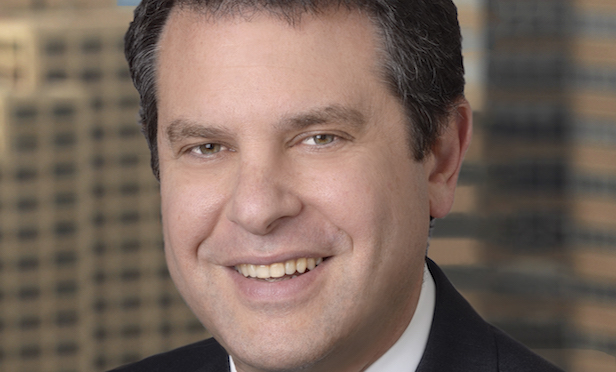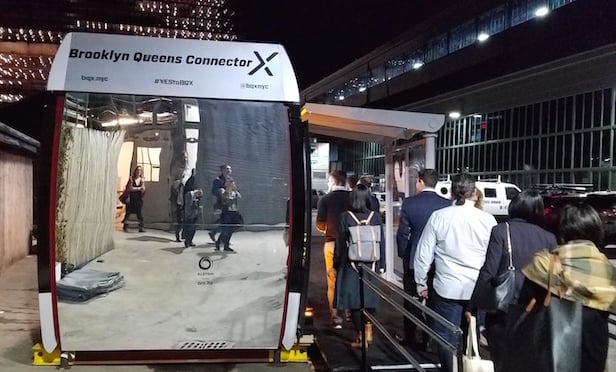 Andy Schmerzler, partner in the real estate group of Venable
Andy Schmerzler, partner in the real estate group of Venable
NEW YORK CITY—Mayor Bill de Blasio's administration is moving forward with plans for the Brooklyn Queens Connector (BQX) light rail. The environmental impact study will begin this winter, followed by the Uniform Land Use Review Procedure (ULURP) in 2020.
“It's a really good idea if there's a demand for it. If there is no demand it's a waste of money,” says Andy Schmerzler, a partner in the real estate group at the law firm Venable, in Los Angeles. He adds, “But I don't think New York has ever regretted investing in public transportation.”
Last week the mayor acknowledged the BQX line will be shorter, will cost more money, and will take longer to complete than originally planned.
Instead of extending from Astoria, Queens to Sunset Park, the line has been truncated to end in Gowanus, Brooklyn. The route will also be shifted away from Dumbo and will run more through Brooklyn's downtown. The estimated construction cost has risen from $2.5 billion to $2.73 billion. The original opening date of 2024 has been pushed back. Now, construction is expected to begin in 2024 and end in 2029.
 BQX prototype light rail car
BQX prototype light rail carNevertheless, city official say it is an important project that will help ease traffic congestion while increasing connectivity by linking different public transit options. The city anticipates ridership of 50,000 for the first year, and that the project will support transit-oriented development. “The Brooklyn-Queens waterfront has experienced incredible growth. Now it's time for our transit system to catch up,” says Mayor Bill de Blasio. “The BQX is one of the biggest, most ambitious projects in a generation. It will be a challenge, but New York City is taking it on.”
Getting a massive infrastructure project done is extremely difficult, Schmerzler comments. “It's always uncertain and it takes a lot of political will and financial resources,” he says. “These projects always take longer and cost more than they think they will.”
For developers building along proposed public transit projects, Schmerzler points out it's always a gamble. Timelines can drag—especially when financing and public interest waver. Don't forget the Second Avenue subway was originally proposed in 1919.
Deputy Mayor Alicia Glen stated the city would seek approximately $1 billion in funding for the BQX from the federal government, according to The New York Times.
Founded in 1990, the Los Angeles Metro Rail has had to play a bit of a mass transit catch-up. Even culturally, “Nobody walks in LA” never meant taking the bus or subway. However, Schmerzler describes the problem of too much traffic. “You've sort of become a prisoner of your neighborhood,” he says, noting public transit is the way of the future.
LA now has four light rail lines, one which runs from Santa Monica and the beach through Culver City, through the University of Southern California to downtown. Schmerzler opines that for developers who placed bets around the light rail in Culver City, it looks as if their investments are paying off. Once a sleepy suburb, Culver City now ranks as a top destination for attracting millennials. Those investors “got in years and years ago,” he observes.
LA's two subway lines include the Purple Line, which is now under construction to extend beneath Beverly Hills High School. The route will connect Koreatown, Beverly Hills and Century City by 2025. The school district has sued to re-route the tunnel, illustrating the complications with such projects.
But Schmerzler points out that the Olympics coming to LA in 10 years motivates the subway's completion. And the Obama administration provided hefty grants and loans to extend the Purple Line.
He explains in LA public infrastructure is often funded under the Mello-Roos Act. Property owners within a Communities Facilities District can be taxed, separate from regular property taxes. Plus, referendums have increased sales taxes to fund specific projects.
Finally, a city can require private developers to contribute to public infrastructure improvements as a part of the conditions for approval of development agreements.
Will the BQX ever be built? “If there is a will to do it, you can get it done,” says Schmerzler. He says the questions to ask is: “Do people want it badly enough?”
© Touchpoint Markets, All Rights Reserved. Request academic re-use from www.copyright.com. All other uses, submit a request to [email protected]. For more inforrmation visit Asset & Logo Licensing.







